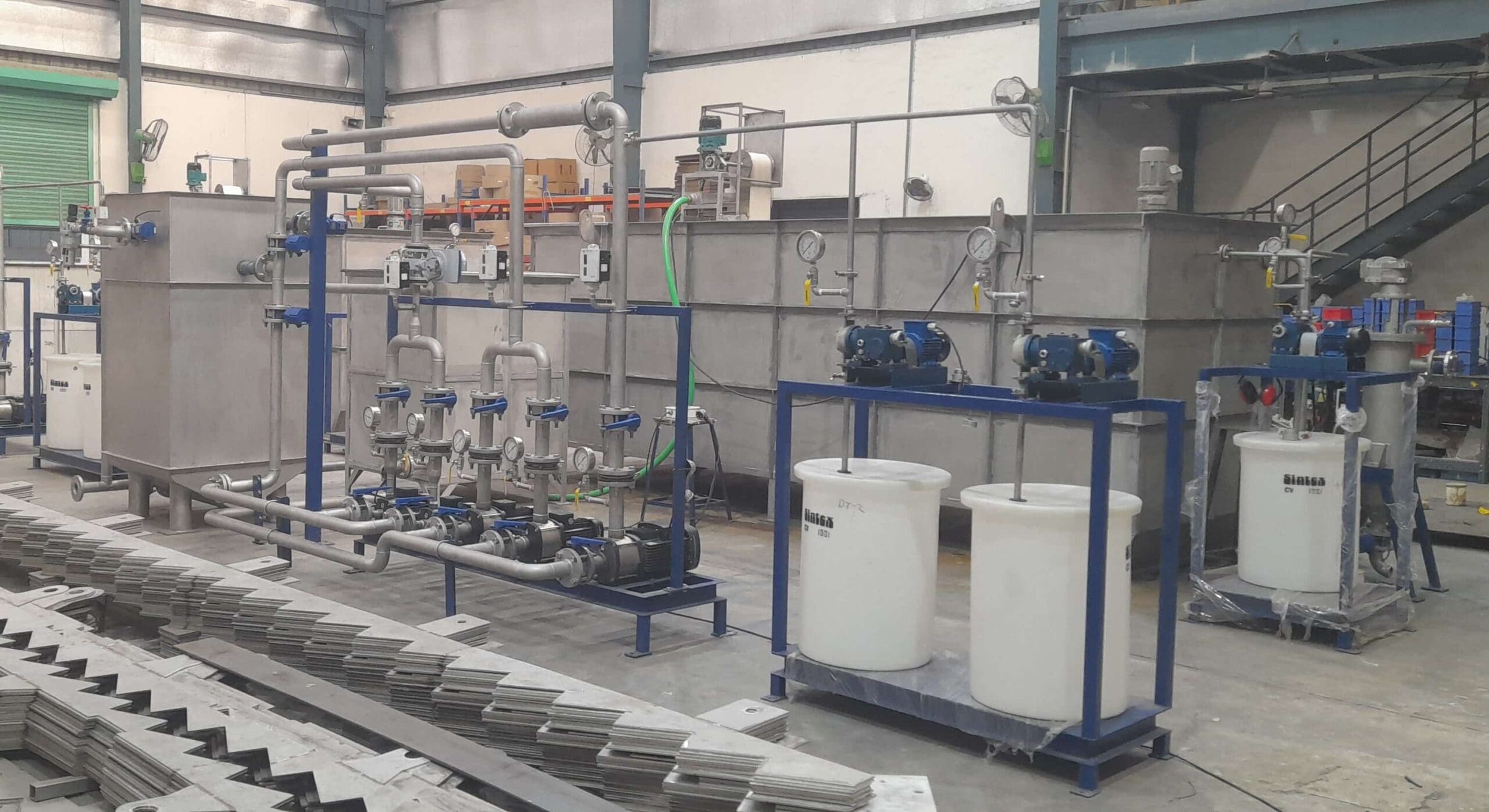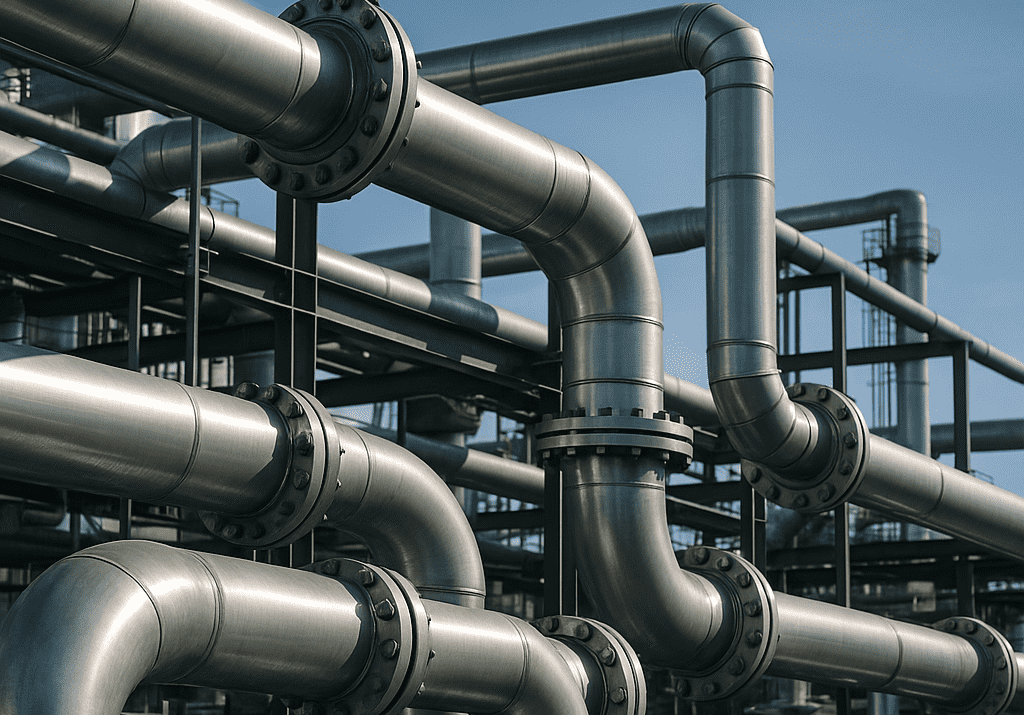Choose a Right Pump Skid for your Industrial Application

Fluid management is an important aspect of various industrial applications. Often, fluid management is the challenging part of the production process. Pump skid assemblies have proved beneficial in combating this challenge and are gaining popularity across applications. To know about pump skid assemblies, read on.
What is a Pump Skid?
Pump skids are pre-engineered, pre-fabricated packages comprising a pump and a driver, both mounted on a common steel base. The pump type can be a centrifugal pump, positive displacement pump, multistage pump, or submersible pump and driver, either an electric motor or a diesel engine. The components of a pump skid are pumps, strainers/filters, pressure gauges, control systems, piping networks, and valves.
Pump skid assemblies are widely used in various industrial applications such as:
- • Oil & gas – for critical processes in oil & gas exploration, production and refining
- • Water & wastewater – to maintain the required water supply and for rain-water harvesting
- • Chemical & petrochemical – for metering, blending, injecting, and transfer of solvents, chemicals, hazardous material, etc.
- • Power generation – in cooling systems, condensate extraction, fuel transfer, and boiler feedwater applications
- • Pharmaceuticals – for ingredient mixing, liquid transfer, and batch formulation
The pump skids are a popular choice across industries for the advantages they offer, which are:
- • Compact design: The pump skids integrate all essential components on a single skid, enabling space-saving – compact design. It also eliminates the need for a dedicated room and complex piping network, thereby saving floor space and simplifying fluid management layout.
- • Customization: Pump skid assembly allows customization to meet the specific requirements of an application.
- • Installation: The pre-engineered and pre-fabricated pump skid saves significant installation time and effort. The minimum assembly requirement on-site enables easy installation of pump skids.
- • Portable: The design of the pump skid facilitates easy movement and deployment from one location to another and remote site locations.
- • Safety: The pump skids’ design, engineering, and fabrication follow the specified standards for the particular application. Thus, they ensure safe operations and minimum margin for errors.
- • Technology adoption: The pump skids design enables easy adoption of advanced technology for real-time monitoring and remote control. It also helps fast adoption of technologies to improve efficiency, increase reliability, and reduce maintenance frequency.
- • Compliance: Pump skid design is as per the industry guidelines that meet safety standards and regulations, thereby adhering to compliance requirements to ensure a safe work environment.
The pump skid offers several advantages that make it popular across industries. The ability to tailor-build a pump skid may become a challenge, posing a question – How to choose the right pump skid for your specific industrial application?
To identify the right pump skid for your application, you must consider the parameters that contribute to the design of the pump skid package. These parameters are:
- • Fluid properties: The type of fluid is one of the key parameters. The properties of the fluid/liquid to consider are viscosity, temperature, specific gravity, vapor pressure, solids present and their concentration, shear sensitivity, and abrasive or non-abrasive.
- The fluid type determines the pump type and driver best suitable for the application. The pump type and drive are also a determining factor in the size of the pump skid. The size of the pump skid may vary depending on the pump type and driver used.
- • Flow rate & pressure: The flow rate and pressure help determine the pump and drive size.
- • Material of Construction (MOC): The material of construction should be compatible with the type of process liquid and other liquids that would come in contact with the pump. For example, hazardous chemical liquid requires a different pump MOC than a wastewater pump.
- • Operations: Downtime is a vital parameter to be considered while choosing a pump skid. In cases where a pump is critical to operations and cannot afford downtime, a heavy-duty pump with special features should be integrated in the pump skid assembly to mitigate downtime.
- • Environment: The pump skid placement, whether indoor or outdoor or in a hazardous environment requires special construction and/or installation considerations.
- • Design & integration: For specific application, integration of systems may require additional components. The pump skid design must be able to adapt to the additional requirements.
Considering the above-mentioned parameters will help you choose the right type of pump skid for your specific application, ensuring smooth and efficient operations.
Frequently Asked Questions
Q.1 What industries commonly use floating oil skimmer systems?
A. Floating oil skimmer systems are commonly utilized in industries such as petroleum refining, manufacturing, wastewater treatment, and marine spill response to efficiently remove oil and other hydrocarbons from water surfaces.
Q.2 How can a floating oil skimmer system help in environmental cleanup efforts?
A. A floating oil skimmer system can significantly aid in environmental cleanup efforts by efficiently removing oil and pollutants from the surface of water bodies, thus minimizing ecological damage and protecting marine life.





